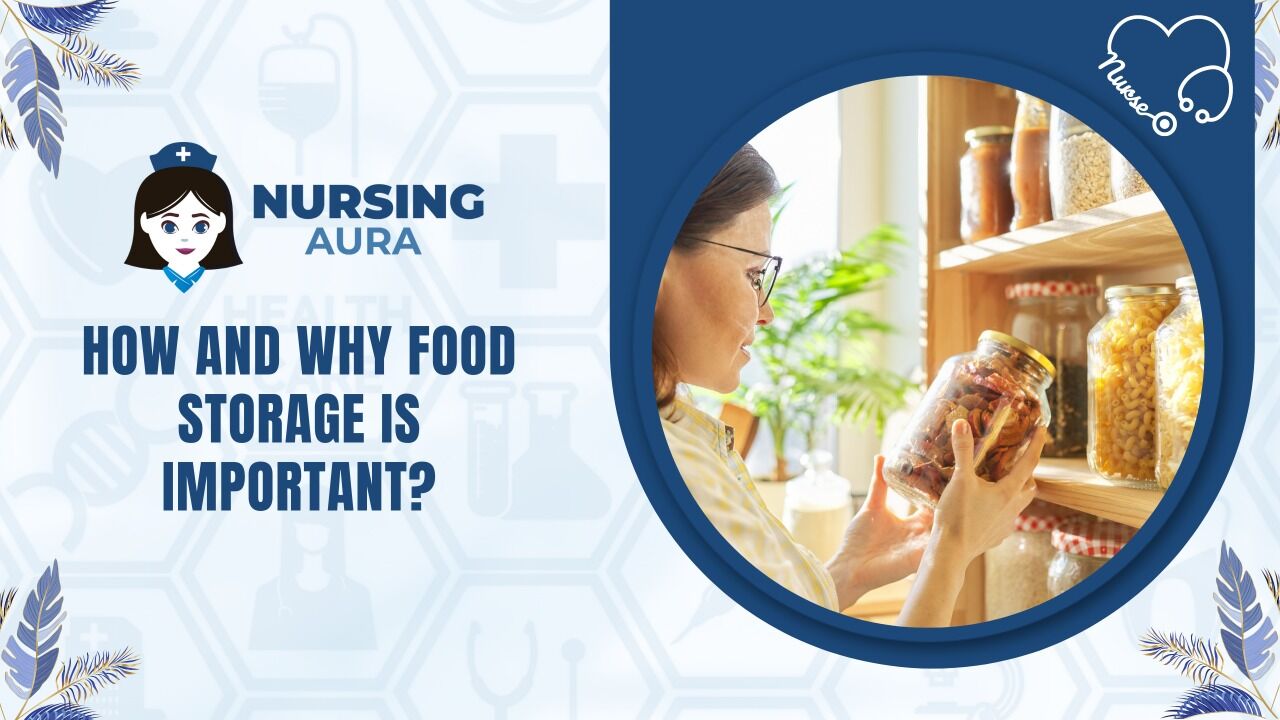What comes to mind when you consider storing food for later consumption? Throughout our lives, we have all stored leftover food. If you are an expert in the field of food storage, you can load your crisper cabinet with vegetables and leave a few organic products to mature on the counter. Regardless, what more should you consider regarding food preservation and storage, and why does it matter?
Why Proper Food Storage Is Important?
Here are a few of the benefits of becoming adept at food storage:
- You reduce food waste, which saves money and helps the environment.
- Produce will maintain its freshness longer.
- You can save money by purchasing in bulk or during the appropriate season. Additionally, you can apply them over a longer period of time without rushing, which might reduce stress.
- Typical preserving food methods, such as ageing, can add beneficial bacteria to your diet.
Various Food Storage Methods, including their Pros and Cons:
There are numerous methods for storing food, each having advantages and disadvantages. Depending on the technique you employ, the following are a few interesting points.
-
Canning
Canning is a cost-effective way to preserve the quality of food at home. Typical canned food kinds include fruit purée, vegetables, sticks and jams, as well as child purées.
The primary steps for proper canning include thoroughly washing the fresh produce that will be used, peeling and hot packing if necessary, adding acids such as lemon juice or vinegar if the item is not already sufficiently acidic, and using self-sealing containers with lids. The appropriate amount of time is subsequently spent heating water or using a pressure canner to process the canning jars. This prevents bacterial growth and eliminates germs to ensure health.
Additionally, canned food varieties retain their nutritional value for longer. Nonetheless, some misfortunes do occur.
Dangers & Negative Aspects of Canning
There are also some risks to consider when canning. Home canning requires a sterile atmosphere to prevent contamination. To prevent the growth of microorganisms such as botulism, canned foods must be stored at the proper temperatures and under airtight covers.
There are two or three potential disadvantages to canning as well. In addition to losing some of their flavor and nutrients over time, canned jam, sticks, and jams sometimes use a large degree of added sugar in their preservation process, which poses health risks.
-
Freezing
An exceptional solution for keeping the majority of food supplies. You can freeze everything from soups, child purees, cereals, and coffee beans to veggie burger patties, chopped produce, blanched vegetables, etc.
A properly maintained cooler can hold food for extended periods, after which it can be defrosted and cooked as desired. Planned-out and afterwards frozen home-cooked meals are generally preferable to store-bought frozen dinners from the supermarket.
Freezing presence insignificant risks. However, there are a few factors to keep in mind. Everything in the freezer is susceptible to freezer burn, which occurs when air interacts with the exterior of food and appears as greyish-earthy blotches. This does not make the food unsafe to consume, although it does make it dry in certain locations. When the food is thawed, these portions can be removed. And despite the fact that some food sources taste essentially the same after freezing, others undergo significant and occasionally delightful alterations in texture.
-
Drying or Dehydration
One of the most effective preservation methods for organic fruits, vegetables, and spices is drying. In general, drying food improves its flavor, costs very little, and makes storage easier by reducing its size.
Drying reduces moisture from fresh foods, hence preventing bacterial growth. The moisture percentage of home-dried foods should not exceed 20%. You can accomplish this by using a commercial dehydrator, draping new spices to dry, broiler-drying food kinds, or, at the very least, by using the sun to create your own solar-powered food dryer. Before drying certain plant-based meals, you may need to blanch them (briefly submerge them in bubbling water) to help preserve them.
Although drying offers many advantages, it also has a few disadvantages. While many nutrients remain stable in the absence of water, nutrients A, C, and thiamine are susceptible to heat.
-
Fermentation
Fermenting foods is a great way to increase your intake of probiotics that are beneficial to the digestive system and immune system. Lacto-maturation, a bacterial interaction that transforms food into a jelly and boosts its nutritious content, is the first step in fermentation. The basic improvements include chopping, grinding, or otherwise preparing your raw food, deciding on the culture you’ll use (often salt, whey, or a starting culture), preparing and adding salty water, and storing everything in a cool, airtight container.
Fermentation necessitates care, as food might get sour if you do not use fresh vegetables or purified or filtered water. Salt helps preserve food by drawing out its water content and reducing bacterial growth. Hence it is commonly used in large amounts during fermentation. This is detrimental to individuals. You may need to consider fresh sauerkraut, kimchi, and other pungent matured veggies as the “salt supply” for particular meals.
-
Cold Storage
This is the most common manner for the majority of us to keep vegetables, whether in a refrigerator or a root cellar if you’re fortunate enough to have one. Cold-storage fruits and vegetables, such as apples, pears, root vegetables, celery, and cabbage, have a lengthy shelf life if stored properly.
Apples, for instance, should ideally be stored at a temperature just above freezing, in a moist and permeable bag.
Even while it’s tempting to bring your fresh fruits and vegetables home and line them up on the counter, it’s recommended not to do so because it can cause them to spoil. Many products of the soil, including apples, melons, blueberries, bananas, potatoes, and tomatoes, emit ethylene gas, which accelerates the maturation and browning of nearby plants.
There are specialized methods for preserving the freshness of various types of agriculturally produced goods. Some fruits and vegetables, such as apricots, grapes, strawberries, green onions, and asparagus, are immediately placed in the ice chest. Before placing avocados, kiwi, peaches, and pears in the freezer, they should be aged on the counter. In addition, pomegranates, Mandarin oranges, ginger, and jicama should never be refrigerated because they are best at room temperature.

